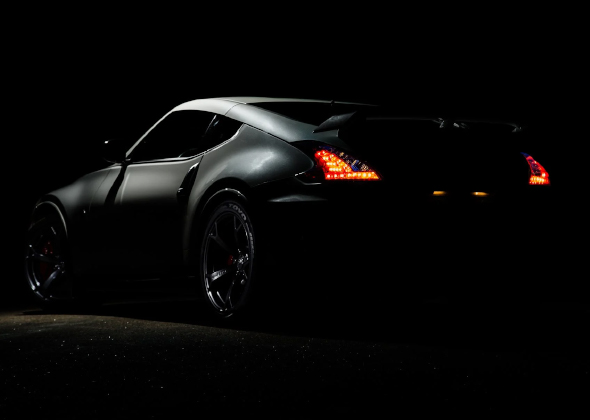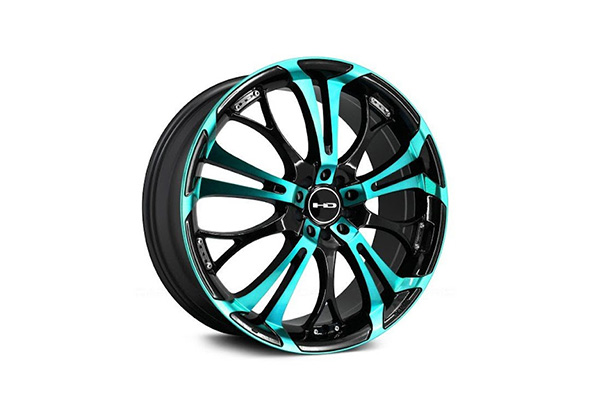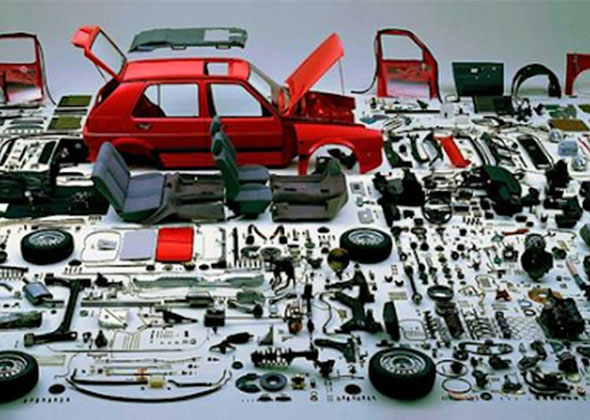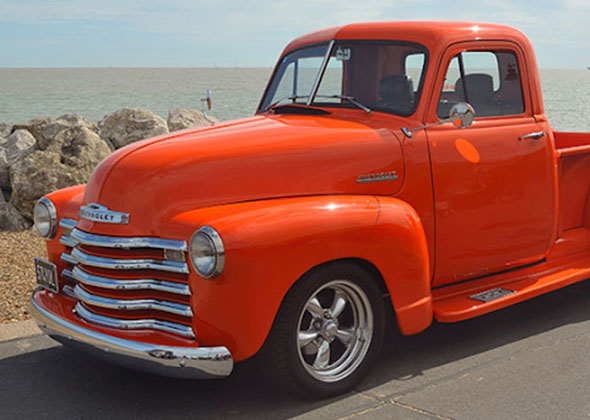Headlights are essential for driving safety. They ensure that you can see the road ahead of you, even at night or in low-light conditions. They also guarantee that other drivers on the road can see your car. Today’s driver has numerous alternatives; however, halogen headlights are one of the most preferred choices.
Halogen headlights are named after a class of gas components, the halogens, employed in their construction. A halogen gas’s main role in a bulb is to increase the life of the tungsten filament.
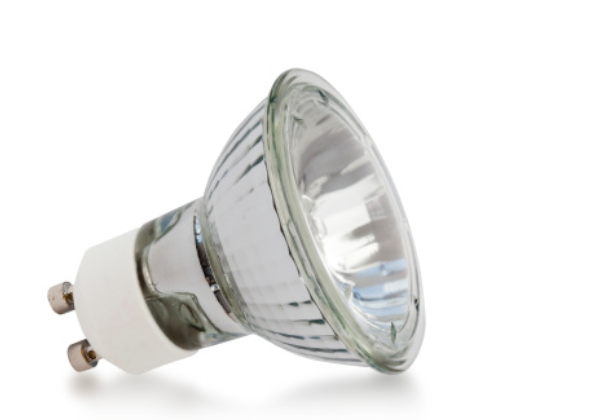
The halogen gas and the tungsten fiber mix create a halogen-cycle substance response, which redeposits vanished tungsten on the fiber, expanding its life. This permits the fiber to work at a higher temperature than a standard brilliant light of comparable power and working life. This also creates higher radiant adequacy and shading temperature. You can buy one from a reputed auto lamp manufacturer.
What Are Halogen Car Lights?
A halogen bulb is similar to any other electric light seen in a home. The only difference is that traditional bulbs use a filament or tiny wire to heat up and create light, but halogen lights employ halogen gas to increase brightness.
These halogen lights are also used in the automobile market, and their popularity is relatively high. This is partly due to their low cost, which facilitates bulk manufacture. Their installation and maintenance are both easy, making it much easier to replace them should they eventually break.
Let’s take a look at the Halogen Lights’ history. The halogen lamp’s origins are similar to those of the incandescent lamp.
In 1882, the use of chlorine to prevent light blackening was patented. Iodine as the halogen gas was invented by General Electric in 1959, making it the first commercially practical halogen lamp.
Following are the key features of the Halogen Lights due to which they have been around for a long time –
- Low Price
- Easy to Replace
- Long-lasting
Halogen lights are utilized in a wide range of business and residential applications. Automobile headlamps, under-cabinet illumination, and work lights all employ halogen bulbs. Furthermore, halogen reflectors such as MR and PAR lamps are frequently utilized for directed lighting such as spotlights and floodlights.
They’re also becoming more popular as a more energy-efficient replacement for incandescent reflectors. There aren’t many places where halogen bulbs can’t be used, but one drawback is the heat they produce, which can be a problem in regions where HVAC expenditures are an issue.
Halogen automobile lights, on the other hand, are almost universal. You can get a new one from virtually any auto parts store or order one online, and they are pretty straightforward to replace. In reality, if you make minor repairs and adjustments to your vehicle, you can pop open the headlight, remove the old headlight bulbs, and replace them with the new, all in a matter of minutes.
The halogen gas and the tungsten fiber mix create a halogen-cycle substance response, which redeposits vanished tungsten on the fiber, expanding its life. This permits the fiber to work at a higher temperature than a standard brilliant light of comparable power and working life. This also creates higher radiant adequacy and shading temperature. You can buy one from a reputed automotive lamp manufacturer.
The average halogen light bulb has a lifespan of about 2,000 hours. This implies you will have to replace it sooner than you would with an alternative. On the bright side, halogen automobile lights are quite inexpensive to replace. These headlights are also energy-intensive, which is one of the reasons they are not the most environmentally friendly or energy-efficient alternative.
However, Non-directional domestic halogen light bulbs are currently forbidden in the E.U. due to their low energy efficiency compared to LED lights.
How Do Halogen Car Lights Work?
Let’s begin with a standard electric light bulb, such as one found in a standard household lamp. A typical light bulb is composed of a relatively large, thin, frosted glass envelope.
A gas, such as argon or nitrogen, is contained within the glass. A tungsten filament is located in the lamp’s center.
This filament is heated to roughly 4,500 degrees Fahrenheit by electricity (2,500 degrees Celsius). Like any other hot metal, Tungsten becomes “white hot” at that temperature and emits a large amount of visible light in a process known as incandescence.
With one noteworthy exception: the halogen cycle, a halogen light performs identically to an incandescent lamp. Tungsten slowly evaporates from a burning filament in an incandescent lamp. This causes the lamp to blacken, reducing light output and shortening its life.
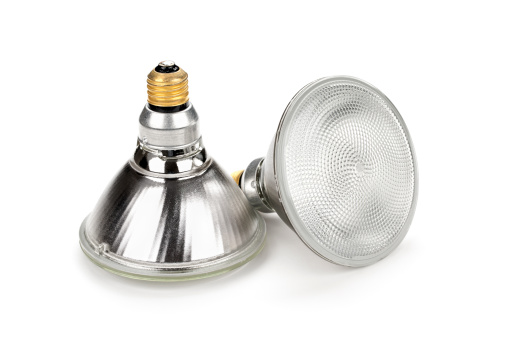
Because the halogen gas reacts chemically with the evaporated tungsten to prevent it from adhering to the glass, halogen lamps can largely eliminate this problem. Some tungsten is returned to the filament, which increases the lamp’s rated life. Because the temperature required for this reaction is higher than that of a typical incandescent bulb, halogen lamps are typically made of quartz.
How Long Do Halogen Car Lights Last?
Car headlights normally last between 500 and 1,000 hours, although there are a variety of elements at work that influence this. Because halogen, xenon, and other types of headlights have various life spans, they cannot all be anticipated to burn out simultaneously.
Some replacement halogen bulbs are brighter than OEM bulbs, which normally means shorter lifespans.
The headlight was filled with inert gas or a vacuum in older sealed-beam headlights. While this worked for many years, how tungsten reacts when heated to the point where it generates light reduced the longevity of these pre-halogen tungsten bulbs.
Material “boils” off the surface of the filament when tungsten gets hot enough to emit light. When there is a vacuum inside the bulb, the substance tends to collect on the bulb, effectively shortening the headlight’s operational lifespan.
Tungsten-halogen bulbs are identical to previous sealed-beam headlights, except that they are halogen-filled. The underlying principle is the same, but halogen-filled capsules last significantly longer than capsules packed with inert gas or vacuum. Instead of letting the material settle on the bulb when the tungsten filament heats up and releases ions, the halogen gas gathers it and puts it back onto the filament.
Several factors affect the operating lifespan of a halogen headlamp capsule or sealed-beam headlight; however, it typically ranges between 500 and 1,000 hours. Brighter bulbs have a shorter lifespan, but you can also choose those specifically engineered to last longer.
Halogen Lights Pros And Cons
Because of their thicker glass, halogen lamps are generally safer to handle than the other types of lamps. As previously stated, the halogen bulb lasts long since the filament lasts long. It may last twice as long as an incandescent bulb while using the same or slightly less power.
Halogen floodlight lights are ideal for lighting items that need to be highlighted. They can be dimmed, but fluorescent lighting cannot. A rheostat can be used to dim the light (A rheostat is a variable resistance switch with different thickness wires within).
As the contact at the end of the knob is twisted, more light appears when the wire becomes thinner and less light appears when the contact goes across thicker wire. Dimming is possible due to the resistance in the cable (greater resistance for dimmer light, lower resistance for brighter light).
Halogen lamps are excellent for outdoor illumination. They are generally more energy-efficient and also brighter than incandescent lights. You don’t have to change the bulbs as frequently since they’re more durable. Recessed lighting, as well as track lighting, are two more applications that lighting stores suggest.
In contrast to incandescent light bulbs, halogen bulbs do not tend to darken with time. Also, halogens are smaller than fluorescent lights or incandescent lights for the same power.
Pros
- The light that is released is 30% whiter and brighter.
- It has a smaller size.
- They consume less energy since they require less power to operate.
- Thanks to tungsten vapors that keep the glass from darkening, the light intensity does not wane with time.
- It has a significantly longer lifespan.
Halogen lamps have several perks, but they also have some drawbacks. These bulbs are slightly more expensive than standard bulbs, costing roughly 60 cents extra per bulb. Most users will recoup their investment in energy savings, but you may not in the case of a light that is only used occasionally.
Halogen bulbs typically last longer than regular bulbs, lasting up to a year under normal conditions; however, not every bulb will meet this standard. Halogen bulbs generate more heat than ordinary incandescent bulbs, so they keep combustible things away from them.
You may notice heat when sitting next to or under them. Never touch halogen bulbs with your bare hands, as they generate a lot of heat, and oils from your skin can create hotspots that can shorten the bulb’s life. Wear gloves when handling them to eliminate this problem, and clean the bulb if you’ve touched it.
Cons –
- They may generate a lot of heat.
- They release ultraviolet radiation. Thus, we must take precautions if we use a halogen light in a direct line of sight with our bodies.
Halogen Lights Vs Xenon Lights Vs Led Lights For Cars
If you travel at night a lot, it’s a good idea to know how long your car headlights will last, so they don’t go out while you’re driving. The type of lighting system is the most critical aspect in determining the longevity of your headlights.
Halogen lights, LED lights, and Xenon headlights are the three basic lighting technologies.
Xenon lamps, often known as HID (high-intensity discharge), are similar to the common tube light. The xenon gas is electrically charged rather than a filament that is heated. This results in a bluish-white light that closely resembles natural light in color.
Xenon bulbs cost more than halogen lamps, but they last longer and are more efficient. These lamps, like tube lights, have a short delay before turning on and take a while to reach full brightness, which is why the high and passing beams are usually equipped with an additional halogen bulb. As a result, each light unit in a car will contain two bulbs, for a total of four bulbs.
LEDs are attractive to automakers and consumers for a variety of reasons: They’re brighter and often cast a wider pattern than halogen headlights, and they consume less energy, last longer, and have a lot whiter hue than halogens, which are typically yellowish. Furthermore, many individuals believe they’re cool.
For years, halogen headlights were the industry standard because they were inexpensive to produce and replace, but LEDs are now outshining them.
They differ in the following ways: Incandescent lights with a tungsten filament inside the bulb are halogens. The filament heats up and produces light when an electric current flows. The use of halogen gas rather than argon gas distinguishes them from traditional incandescent bulbs. Compared to traditional incandescent bulbs, halogen lamps are brighter and last longer.
LEDs create brighter light while generating less heat by passing an electric current via a semiconductor (or diode). LEDs are around 90% more efficient than incandescent bulbs, and because they produce less heat. LEDs, unlike incandescent lights, do not normally burn out. However, they gradually dim over time.
LEDs offer more design freedom in headlights and other vehicle lights because they are smaller than bulb-type lighting. They are more expensive than halogens or high-intensity-discharge headlights, which use xenon gas.
- HID lamps have a life expectancy of about 2000 hours. HID systems are advantageous since they consume less electricity while producing greater light. However, some organizations, such as the National Highway Traffic Safety Administration, believe the headlights are too bright.
- Because LED headlights are so new, manufacturers have yet to release lifespan figures. Although LED lighting is standard on the 2010 Toyota Prius, Toyota claims that they last longer than HID lamps.
- Halogen lamps are the most prevalent form of headlamp. Their lifespan varies between 450 and 1000 hours. The range is so vast because heat and efficiency are both important concerns. As a result, it’s a good idea to check halogen headlights regularly because you never know when one will cease operating.
There are various distinct types of headlights, and one of the most important differences between them is how long they should endure.
Average lifespan
- Tungsten-Halogen: 500 – 1,000 hours
- Xenon: 10,000 hours
- LED: 30,000 hours
Because these are just averages, headlights could last longer or burn out faster than these figures suggest. If you notice that your headlights are burning out much faster than usual, there is likely a problem.
In the same way, as halogen headlights employ tungsten filaments, xenon lamps use the noble gas xenon instead of a halogen gas like iodine or bromine. The key distinction is that, unlike halogen lights, which rely entirely on the tungsten filament for illumination, xenon gas provides a bright white light.
Tungsten-xenon headlights often live longer than tungsten-halogen bulbs because xenon may effectively reduce the evaporation of material from a tungsten filament. A variety of circumstances determines the longevity of a xenon headlamp. However, it is conceivable for xenon headlight bulbs to survive more than 10,000 hours.
HID headlights live slightly longer than halogen bulbs, but not as long as tungsten-xenon lamps. Instead of a glowing tungsten filament, these headlight bulbs use electrodes that look like spark plugs. The xenon gas is excited and emits a dazzling, white light rather than igniting a mixture of fuel and air like spark plugs.
Although HID bulbs live longer than halogen lamps, they are not as long-lasting as tungsten-xenon bulbs. This type of headlamp has an average life expectancy of roughly 2,000 hours, which can be lowered for various reasons.
Even though halogen light bulbs are not as energy efficient as LEDs or compact fluorescent lamps (CFLs), they may generate a significant quantity of light, depending on their output.
Although halogen lights are brighter than incandescent bulbs, they are still no match for LEDs in terms of brightness. It’s vital to note that 90 percent of the energy required to power a halogen bulb is squandered as heat, with just 10 percent of the electricity utilized for real illumination.
An indicator of how well a light source reliably renders different colors is the CRI (color rendering index). Halogens are near-perfect, with CRI values in the high 90s for most products. LED and CFL lights cannot compete, although their energy efficiency is still above acceptable limits.
You may notice that the LED begins to flicker when you replace a halogen bulb with an LED bulb. There are many possible reasons for this, but the most common is that the current does not maintain a steady voltage.
In contrast to small fluorescent bulbs, the halogen lamp may be dimmed completely. When dimmed, the halogen uses extremely less energy and has a longer lifespan than other lighting sources. As early as the mid-1960s, Frederick Mosby produced early halogen lights with standard Edison screw-in bases for usage in the house, which he patented.
Source Premium Halogen Car Lights From A Reliable Auto Lamp Manufacturer
Now that you have a general idea of what to search for, the next step is to locate the halogen bulbs you want on the internet. You may start with standard retail locations, but niche lighting stores provide excellent savings on halogen bulbs as a second option. Purchasing from large box retailers might be too pricey.
One approach to save money is to look for merchants that charge minimal or no shipping charges for the things you order online. When purchasing halogen lights, this may make a significant difference, as you may be able to save more money if the delivery costs are decreased instead of receiving a more precise discount. In addition, if discount codes are available, you may use them to further lower the price if they are accessible.
The halogen light bulb is superior and more long-lasting than the typical incandescent light bulb. While it has a wide range of applications, the total quantity of light that it throws, along with its long lifespan, makes it an excellent option for your lighting requirements. Take advantage of the halogen lighting guide to determine your application’s appropriate wattage, bulb size, and bulb type.
Furthermore, when it comes to lighting up your driveway, you may discover new applications for halogen lights, such as utilizing them as recessed lighting inside or as various forms of indoor and outdoor lighting, depending on your requirements.
Final Word
So, now you must be aware of the advantages offered by halogen headlights and why you must install them in your vehicle. Halogen lights offer a “greener” alternative to the standard headlights, which can be easily replaced. The only downside to using these lights is that they have a short lifetime; however, the best part is that they are quite cheap and affordable.
Sunway is one of the largest and most well-known distributors of truck lights, which aid to increase the value of your vehicle. We produce items of reliable quality and deliver them as quickly as possible. We have more options for our customers to pick from. Our lights are particularly developed to provide the most benefits to consumers.


